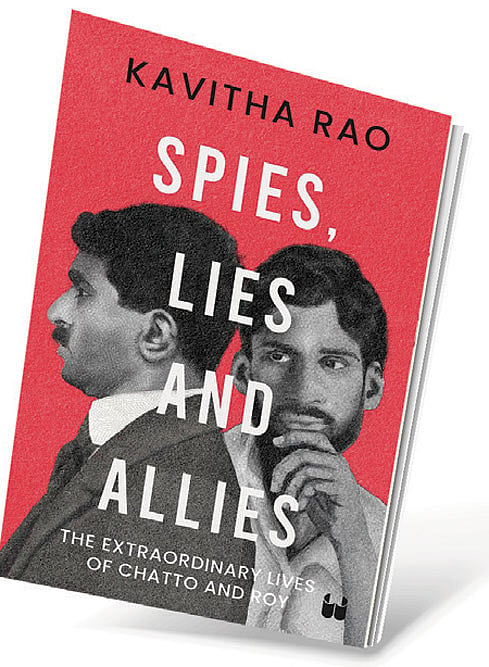Maverick Revolutionaries

IN A CONVERSATION about her book, Spies, Lies and Allies, Kavitha Rao says: “We’re obsessed with the great heroes, and other characters fall by the wayside.” Her book is about two such forgotten but extraordinary characters of the Indian freedom movement— Virendranath Chattopadhyaya (or Chatto, as he was known) and MN Roy. In their restless, dramatic lives, lies not just a thrilling story of passion and conviction, but also a measure of global ideological, revolutionary influences and their intersections with Indian political thought and the freedom movement.
Chatto and Roy were two maverick revolutionaries who travelled both the geographical and ideological world to garner support for Indian revolutionaries. “Travel came to define both of them,” Rao writes. If Roy traversed Japan, China, Petrograd in the East, and New York, California, Mexico in the West, Chatto travelled from London to Paris, Germany to Sweden, and finally t0o the Soviet Union, his chosen abode, where he lived his last years before he was arrested and executed by a firing squad in 1937.
Their choice of ideological motives and mentors remained as eclectic as their destinations, though what remained was their unwavering commitment to a cosmopolitan idea of “freedom”. What freedom meant of course changed, especially for Roy as his political career evolved and his ideological gurus changed. From self-admittedly being “an emissary of revolutionary nationalism … against British imperialism”, Roy became more Marxist than Lenin during the Second Comintern (1920), denouncing bourgeois
national movements (including the Indian National movement) as conservative and lacking true revolutionary potential. Eventually, Roy got disillusioned with communism, and found ideological closure in “radical humanism”—an idea and philosophy of multi-dimensional freedom.
2025 In Review
12 Dec 2025 - Vol 04 | Issue 51
Words and scenes in retrospect
If Roy was a “twice born heretic”, Chatto was labelled a “magnificent failure”. Such were his passions and projects, and his fiascos and failures. He dramatically escaped a British secret-service ambush in Switzerland, and inspired, Rao tells us, a Somerset Maugham character, Chandra Lal, in a short story ‘Giulia Lazari’. Rao traces Chatto’s journey through multiple associations and involvements—with Savarkar in India House, London; with Berlin India Committee; with the Ghadar network; with the Zurich Bomb Plot (1915); with anti-British propaganda in Sweden—all before he landed in Moscow, in ‘the brave new world offered by Lenin’. It was here that Chatto and Roy’s world would meet amidst differences and distrust.
The book condenses characters, events, trials, motives, enchantments and disillusionments and offers a rich account of their complex lives. Deft telescoping notwithstanding, the narrative does get at times disjointed and confusing. As an evolving story of intrigue and alliances, it may have done better with a more linear framing.
There are three not-so-small errors in the book, two of which lie squarely on the publisher’s (Westland’s) shoulders. First, here is yet another book without an index and a bibliography. Unlike fiction, historical accounts mandate an index and bibliography. Second, the numbering of the chapters and of the corresponding endnotes do not match. Third, there’s a jarring factual error on p 34—The Hindu Mahasabha (HMS) was not founded by Savarkar. Lodged in the Andamans cellular jail, Savarkar was serving two life terms in 1915, when the HMS was founded by Madan Mohan Malaviya. Savarkar joined the Mahasabha in 1937, after his internment at Ratnagiri ended.
My quibbles aside, the book’s success lies in bringing out the tragedy of Chatto’s and Roy’s lives. It is in the tragedy of their ideological and personal fates that the two characters resemble each other.

